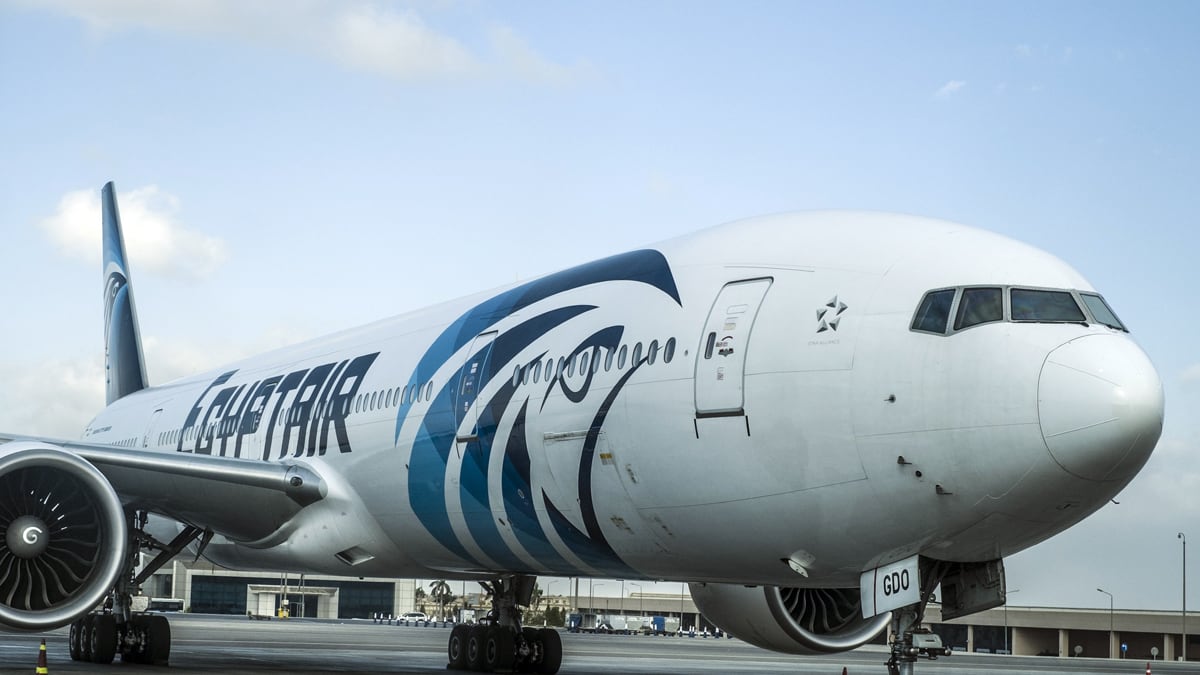Editor’s Note: This story has been updated throughout.
The evidence is building that EgyptAir Flight MS804 was brought down by a sudden and catastrophic explosion, consistent with a bomb having been detonated on board.
Flight tracking data showing its altitude, speed, and direction, ends instantaneously while the plane was at its cruise height of 37,000 feet. This can now be combined with reports that a military satellite using infrared technology detected a flash at the time and location where the airplane was last tracked, according to NBC News. U.S. officials told Reuters a review of preliminary satellite imagery has produced no sign of an explosion so far.
If the Airbus A320 was stricken by a mechanical failure it is highly unlikely that the effects would have been so sudden, leaving the pilots at least some time to send a Mayday call. No call was made, officials say.
Reports that wreckage has been found floating in the eastern Mediterranean were later denied by Egyptian officials. Once it is found, as it will be, and given the increasing indications that a bomb caused the disaster an urgent priority for investigators will be to look for evidence in the wreckage of blast and fire.
If there is evidence of a bomb blast the next priority will be to establish where the bomb was placed on the airplane: in the cabin or in the cargo hold.
Essential clues to that could be found both from physical wreckage from the airplane and from bodies of passengers, even down to their seat locations.
In this situation the jet’s black boxes—the flight data recorder and the cockpit voice recorder—are of little value since their data would have been terminated with the sudden explosion, leaving only a record of what was until then an absolutely normal flight. Wreckage is where the story is to be told.
There has yet been no credible claim by any terrorist group that they were responsible. If a bomb was successfully placed on the flight not only does this point to a weak point in security at Charles de Gaulle airport in Paris, the origin of the flight, but it could mean that bomb makers have found a new way of eluding current bomb-detecting technology.
The man credited with being the world’s most-ingenious bomb designer is al Qaeda’s Ibrahim al-Asiri. Al Qaeda has recently been overshadowed by ISIS, and some experts believe that it wants to re-establish its superiority in attacks on what it has always regarded as the most effective Western target, commercial aviation.
If the flight was brought down by a bomb, the timing of the blast could be a part of the signature of the bomb maker. Was it timed to detonate specifically at the only place on the EgyptAir jet’s route when it was over water? The retrieval of wreckage and, particularly, of the flight data recorders, is far more difficult with a plunge into the sea than when the airplane falls in plain sight over land. On the other hand counter-terrorism experts have always believed that bombers would rather bring down a jet over land and, ideally, over a city for the maximum effect—as was the intention of Umar Farouk Abdulmutallab, the underpants bomber, on Christmas Day 2009, aiming for Detroit.
The jet was flying what has become one of the most densely trafficked airline routes in the world, a crucial corridor in the sky for international flights.
Following the downing by a missile of Malaysia Airlines Flight MH17 over Ukraine in July 2014 that part of Eastern Europe was—belatedly—defined as a war zone. The main airline routes between Europe, the Middle East, and Asia were then diverted south to fly over Romania, Greece, Turkey, and across the eastern Mediterranean into Egyptian airspace.
As a result these long-haul flights were added to airspace already thick with jets flying tourist traffic between European cities and the eastern Mediterranean, like the EgyptAir flight from Paris to Cairo.
The corridor became even more crowded after the crash of the Russian Metrojet while flying over the Sinai Peninsula last October, when the Sinai airspace was also ruled too dangerous for commercial flights. This had the effect of pushing a lot more intercontinental flights further south, flying eastbound and westbound across Cairo, the Red Sea, and Saudi Arabia and Dubai (Dubai is now a major hub for flights between Europe, Africa, and Asia).






